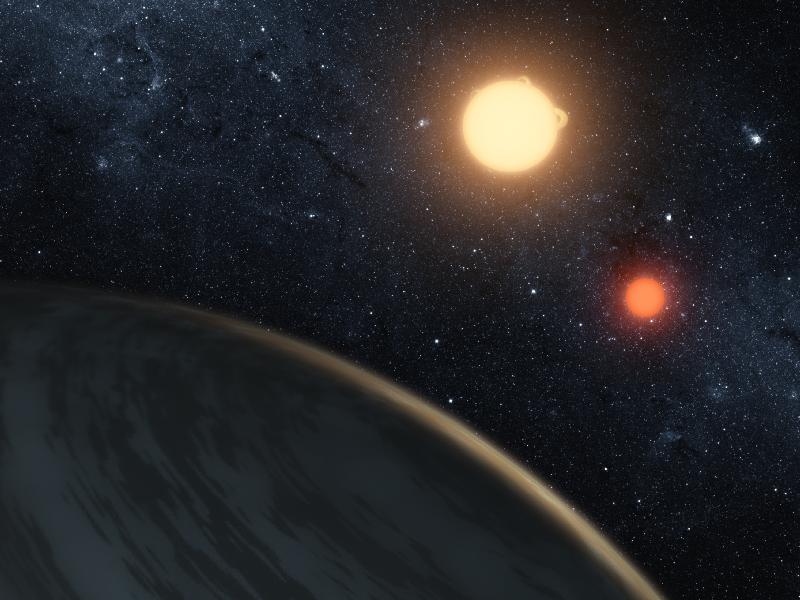Science News
The Real Tatooine

The existence of a world with a double sunset, as portrayed in the film Star Wars more than 30 years ago, is now scientific fact. NASA’s Kepler mission has made the first unambiguous detection of a circumbinary planet—a planet orbiting two stars—200 light-years from Earth.
Unlike Star Wars’ Tatooine, the planet is cold, gaseous and not thought capable of harboring life, but its discovery demonstrates the diversity of planets in our galaxy. Previous research has hinted at the existence of circumbinary planets, but clear confirmation proved elusive.
The new planet is in the Kepler-16 system, which is home to a pair of orbiting stars that eclipse each other from our vantage point on Earth. ScienceNOW has a video of the orbiting stars and further describes them:
They are about 1.5 and 4.5 times smaller than our own sun, and they orbit each other every 41 days, causing brightness dips that have been detected by the Kepler space telescope. Kepler also spied additional dips, produced when a Saturn-sized planet transits across the stars every 229 days.
The gravitational tug on the stars, measured by changes in their eclipse times, was a good indicator of the mass of the third body. Only a very slight gravitational pull was detected, one that only could be caused by a small mass. The findings are described in a new study published last week in the journal Science.
Science News reports how and where we can see the system:
Kepler-16 is visible in the night sky in the constellation Cygnus. Near the swan’s western wingtip are three stars, and the Kepler-16 stars are nearest the middle of the three, visible with binoculars… Next year, Kepler-16b’s transit will cause a 1.7 percent drop in the brightness of the bigger star, which will be visible in parts of Asia to amateur astronomers with telescopes.
Kepler-16b is an inhospitable, cold world about the size of Saturn and thought to be made up of about half rock and half gas. The planet lies outside the system’s habitable zone, which is a defined distance from the stars where liquid water could exist on the surface.
Visual effects supervisor John Knoll of Industrial Light & Magic, a division of Lucasfilm Ltd., the creators of Tatooine, commented about the discovery at a NASA press conference. “Working in film, we often are tasked with creating something never before seen. However, more often than not, scientific discoveries prove to be more spectacular than anything we dare imagine. There is no doubt these discoveries influence and inspire storytellers. Their very existence serves as cause to dream bigger and open our minds to new possibilities beyond what we think we know.”
The news of Kepler-16b was also announced as part of the Extreme Solar Systems (ESS) II conference held in Grand Teton National Park last week. For other news from the conference, click here and here. And for more images of these other worlds, visit this Wired article.
Image: NASA/JPL-Caltech/T. Pyle